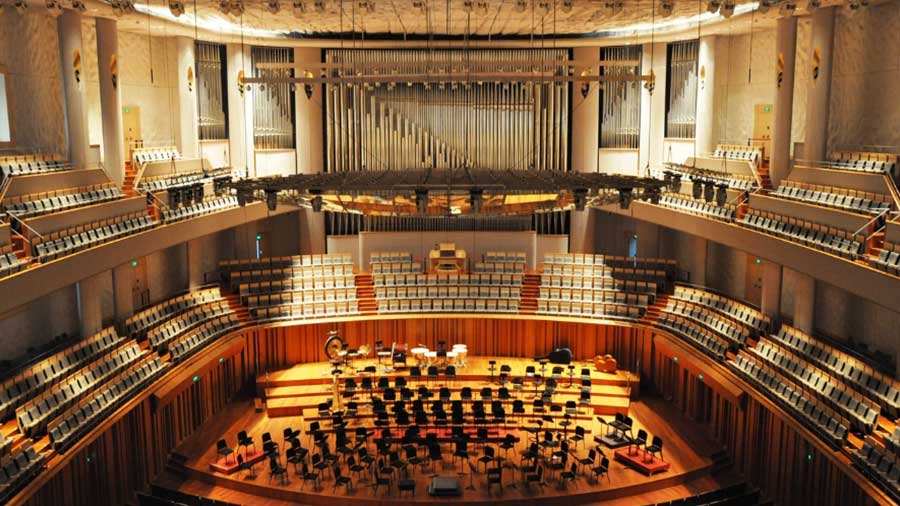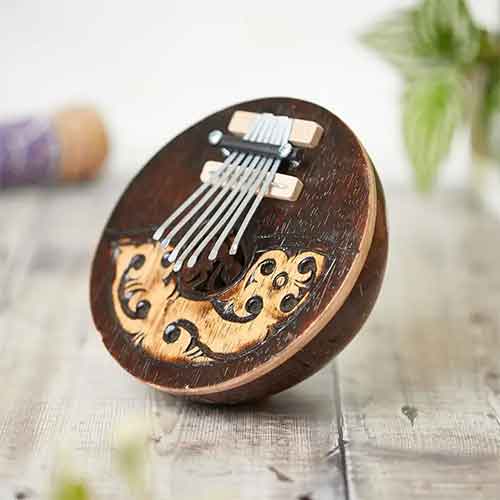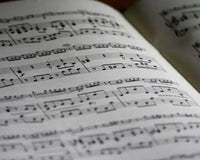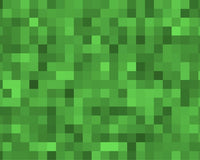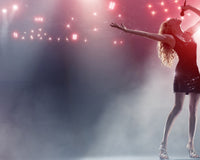Orchestras bring together various instruments, each playing a key role in creating a symphonic piece. From the strings and brass to the woodwinds, every instrument contributes to the overall sound. In this guide, we’ll cover the different instrument families in an orchestra, their unique qualities, and how they work together to create music. We’ll also discuss the cost of owning orchestral instruments, the benefits of being an orchestra member, and the differences between Indian and international orchestras.
The String Section
The string section forms the backbone of an orchestra, providing the foundation of sound and harmony. It consists of four main instruments: the violin, viola, cello, and double bass.
The Violin
The violin is the smallest and highest-pitched stringed instrument. It is played with a bow and produces a warm and vibrant sound. With its versatility and expressive capabilities, the violin often takes on the role of the lead instrument in an orchestra.
The Viola
Slightly larger than the violin and has a mellow tone. It is played similarly to the violin but has a lower range. The viola bridges the higher-pitched violins, lower-pitched cello, and double bass, providing a rich and warm middle voice in the string section.
The Cello
The cello adds depth and richness to the string section with its rich and resonant sound. It is played upright, resting on the floor, and produces a wide range of tones. The cello often plays melodic and solo roles within the orchestra, showcasing its expressive capabilities.
The Double Bass
The double bass, the largest and lowest-pitched instrument in the string family, provides the foundation of the orchestra's sound. It is played with a bow or plucked with the fingers, producing deep and powerful tones. The double bass provides the rhythmic and harmonic support for the music.
The Woodwind Section
The woodwind section consists of instruments made of wood or metal that are played by blowing air into them. This section adds colour, texture, and melodic lines to the orchestra.
The Flute
The flute is a versatile instrument that produces a clear and piercing sound. The flute is played by blowing air across a small hole in the mouthpiece. The flute has a wide range and can play delicate melodies and fast, virtuosic passages.
The Oboe
The Oboe has an expressive sound. The Oboe is played by blowing air through a double reed, which vibrates to produce the sound. The Oboe often plays the melody or solos in the woodwind section, adding a sad quality to the orchestra's sound.
The Clarinet
The clarinet has a warm and rich tone. It is played by blowing air through a single reed attached to a mouthpiece. The clarinet is known for its versatility and expressive capabilities, often playing various musical styles and genres.
The Bassoon
The bassoon has a deep and resonant sound, often called "reedy." It is played by blowing air through a double reed. The bassoon provides a rich and velvety bass voice in the woodwind section, adding depth and colour to the orchestra's sound.
The Saxophone
While not traditionally a member of the orchestral woodwind section, the saxophone is sometimes included in modern compositions. It is played by blowing air through a single reed, similar to the clarinet. The saxophone adds a distinct and vibrant sound to the orchestra when included.
Bugle
The bugle is a natural brass instrument that only plays notes in the instrument's harmonic series. It is primarily used in military and ceremonial contexts, such as bugle calls and marches.
Alphorn
The alphorn is a wooden brass instrument that originated in the Alps. It is a natural brass instrument that produces a warm sound. The alphorn is traditionally used in Swiss folklore music and is often associated with the beauty of the Swiss mountains.
Didgeridoo
The didgeridoo is a wooden brass instrument that is indigenous to Australia. It is one of the oldest known musical instruments in Aboriginal music. The didgeridoo produces a deep and resonant sound created by the player's circular breathing technique.
The Differences in Sound
Various factors, including the bore taper and diameter, influence the distinctive sound of brass instruments. Brass instruments can be categorized into cylindrical bore and conical bore instruments.
Cylindrical Bore Instruments
Cylindrical bore instruments, such as the trumpet and trombone, have tubing of approximately constant diameter. These instruments are known for their bright and penetrating tone quality. The cylindrical bore design contributes to their ability to produce robust and focused sound.
Conical Bore Instruments
Conical bore instruments, like the flugelhorn, cornet, tenor horn, baritone horn, horn, euphonium, and tuba, have tubing that gradually increase in diameter. These instruments have a more mellow and rounded tone quality than cylindrical bore instruments. The conical bore design allows for a broader range of expressive possibilities and a warmer sound.
Another factor that affects the sound of brass instruments is the length of the tubing relative to its diameter. Brass instruments can be classified as whole-tube or half-tube instruments.
Whole-Tube Instruments
Whole-tube instruments, such as the tuba and euphonium, have larger bores about the length of the tubing. These instruments can easily play the fundamental tone and produce a rich and resonant sound. With its deep and powerful sound, the tuba is often considered the backbone of the brass section in orchestras and bands.
Half-Tube Instruments
Half-tube instruments, like the trumpet and horn, have smaller bores about the length of the tubing. These instruments require more skill to play the fundamental tone accurately. They are known for their agility and ability to produce melodic and virtuosic passages.
Tuning and Intonation
Tuning and intonation are essential considerations for brass instrument players. The design of the instrument and the way the tubing is configured can affect the pitch accuracy of specific notes. Valved brass instruments require compensation to adjust the tuning appropriately, either through the player's embouchure control, mechanical assistance, or the position of the stopping hand in the bell.
Valves are used to change the length of the tubing and adjust the pitch of the instrument. However, the addition of size through valves can cause intonation discrepancies. Players must compensate by adjusting their embouchure or using additional slides or triggers to achieve accurate intonation throughout the instrument's range.
The Cost of Brass Instruments
Brass instruments vary significantly in cost, mainly due to factors such as brand, materials, craftsmanship, and additional features. Professional-grade brass instruments are generally more expensive due to their
superior construction, materials, and sound quality. Beginner or student-level brass instruments are typically more affordable and designed to provide a solid foundation for learning.
The cost of brass instruments ranges from a few hundred pounds for entry-level models to thousands of pounds for high-end professional devices. Aspiring brass players need to consider their budget and level of commitment before investing in an instrument. Renting or borrowing an agent can be viable for beginners still exploring their interest in brass playing.
Learning to Play Brass Instruments
Playing a brass instrument requires dedication, practice, and proper instruction. Brass instrument lessons are available through private instructors, music schools, and community programs. These lessons typically cover appropriate embouchure technique, breath control, fingerings or slide positions, and musical interpretation.
Brass instrument lessons can be tailored to individual goals and skill levels. Beginners will focus on building a solid foundation of technique and musical understanding, while more advanced players may explore advanced techniques, repertoire, and group playing. Regular practice is essential to develop brass instrument proficiency and ensure continued progress.
The Role of Brass Instruments in the Orchestra
Brass instruments play a vital role in the orchestral setting, adding depth, power, and colour to the overall sound. In an orchestra, brass instruments are typically grouped in the brass section, along with percussion instruments. The brass section provides harmonic support, plays melodies, and dramatically impacts the music.
Orchestral brass instruments, such as the trumpet, horn, trombone, and tuba, have specific roles. Trumpets often play fanfares, solos, or prominent melodic lines, while horns provide lush harmonies and lyrical melodies. Trombones add depth and resonance to the sound, and tubas offer a strong foundation and support the lower end of the music.
The Brass Section in the Orchestra
The brass section in an orchestra usually consists of two to three trumpets, two to four French horns, two tenor trombones, one bass trombone, and one tuba. The exact number of brass players can vary depending on the musical repertoire and the size of the orchestra. Additional brass instruments, such as the piccolo trumpet or bass trumpet, may be called for in specific compositions.
The brass section works closely with the other areas of the orchestra, including the woodwinds, strings, and percussion. Together, they create a balanced and cohesive sound that brings the composer's vision to life.
The Trumpet
The trumpet is played by blowing air into a moutpiece and typically plays melodies and solos in the orchestra, adding a majestic and regal quality to the music.
The French Horn
The French horn has a warm and mellow tone. It is played by blowing air into a cup-shaped mouthpiece and producing sound through a coiled tube. The French horn often plays harmonies, melodies, and solos, adding depth and richness to the orchestra's sound.
The Trombone
The trombone has a deep and resonant sound. It is played by blowing air into a cup-shaped mouthpiece and using a slide to change the pitch. The trombone often plays powerful and expressive melodies, adding a majestic and dramatic quality to the orchestra's sound.
The Tuba
The largest lowest-pitched instrument in the brass section is the tuba. It is played by blowing air into a sizeable cup-shaped mouthpiece and producing sound through a coiled tube. The tuba provides a solid foundation for the brass section, adding depth and power to the orchestra's sound.
The Percussion Section
The percussion section consists of instruments struck, shaken, or scraped to produce sound. This section adds rhythm, texture, and special effects to the orchestra's sound.
The Timpani
The timpani, or kettle drums, are large drums played with mallets. They produce deep and resonant tones and provide a rhythmic foundation for the orchestra. The timpani often play essential accents and dramatic effects in the music.
The Snare Drum
The snare drum is a versatile instrument played with sticks or brushes. It produces a sharp and crisp sound, adding rhythmic drive and accents to the music. The snare drum is often used in military marches and dramatic passages.
The Bass Drum
The bass drum is a large drum played with a mallet or pedal. It produces a deep, booming sound, adding impact and power to the orchestra's sound. The bass drum often plays the downbeats and pivotal moments in the music.
The Cymbals
Cymbals are metal plates played by striking them together or against another surface. They produce a shimmering and crashing sound, adding dramatic and percussive effects to the music. Cymbals are often used to accentuate climactic moments and create a sense of excitement.
The Triangle
The triangle is a small instrument played by striking it with a metal beater. It produces a clear, ringing sound and adds a sparkling and delicate touch to the orchestra's sound. The triangle is often used to create rhythmic accents and add a sense of enchantment.
The Keyboard Section
The keyboard section consists of instruments played by pressing keys, producing sound through strings, hammers, or electronic means. These instruments provide harmonic support, melodic lines, and special effects to the orchestra's sound.
The Piano
The piano or keyboard is played by pressing keys and typically plays melodies, harmonies, and complex chords, adding depth and richness to the orchestra's sound.
The Harpsichord
The harpsichord is a historical keyboard instrument. It is played by pressing keys that pluck strings, producing a bright and resonant sound. The harpsichord is often used in Baroque music to provide a rhythmic and harmonic foundation for the orchestra.
The Celesta
The celesta is a unique keyboard instrument that produces a bell-like sound. Striking metal plates play it with hammers, similar to a piano. The celesta adds a top quality to the orchestra's sound and is often used in delicate passages.
Electronic Instruments
In modern compositions, electronic instruments such as synthesizers and computers are sometimes used in the orchestra. These instruments can produce a wide range of sounds and effects, expanding the possibilities. Electronic devices can add a contemporary and experimental element to the orchestra's sound.
Orchestra musical instruments come together in perfect harmony to create the inspiring sounds of orchestral music. Each device plays a vital role in shaping the orchestra's sound, from the soaring melodies of the strings to the powerful brass section, the delicate woodwinds, the rhythmic percussion, and the versatile keyboards.
Being an orchestra member is a unique and rewarding experience, allowing musicians to collaborate and create beautiful music. However, owning orchestra instruments can be a significant investment, both in terms of cost and maintenance. It is essential to choose the best tools and ensure their proper care to achieve the highest level of performance.
Up Next: 50+ Unusual Musical Instruments

